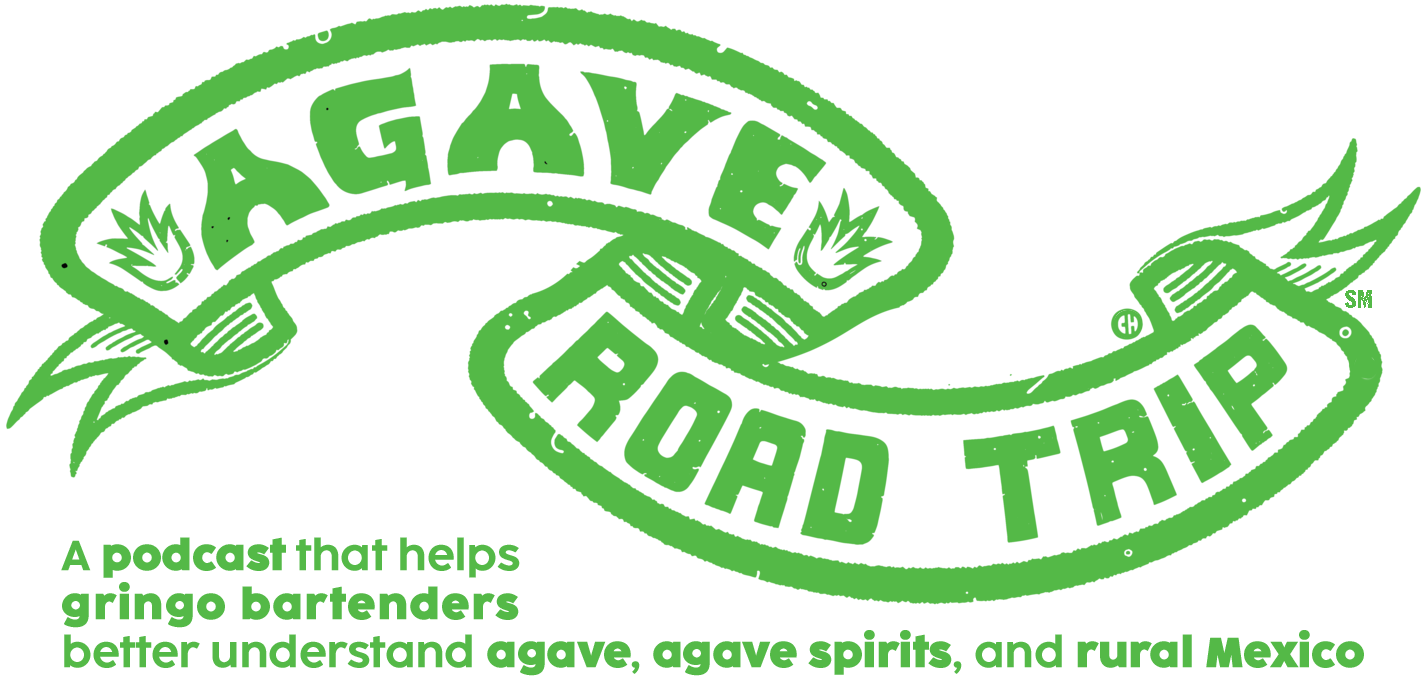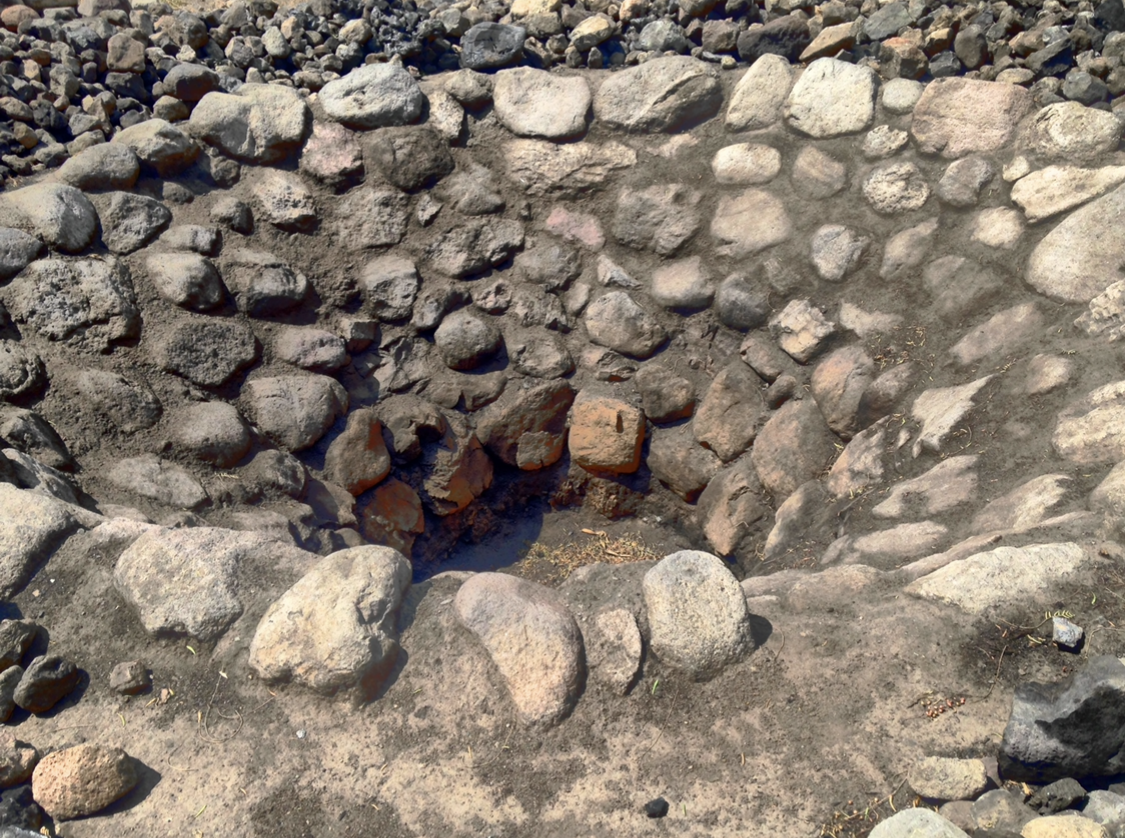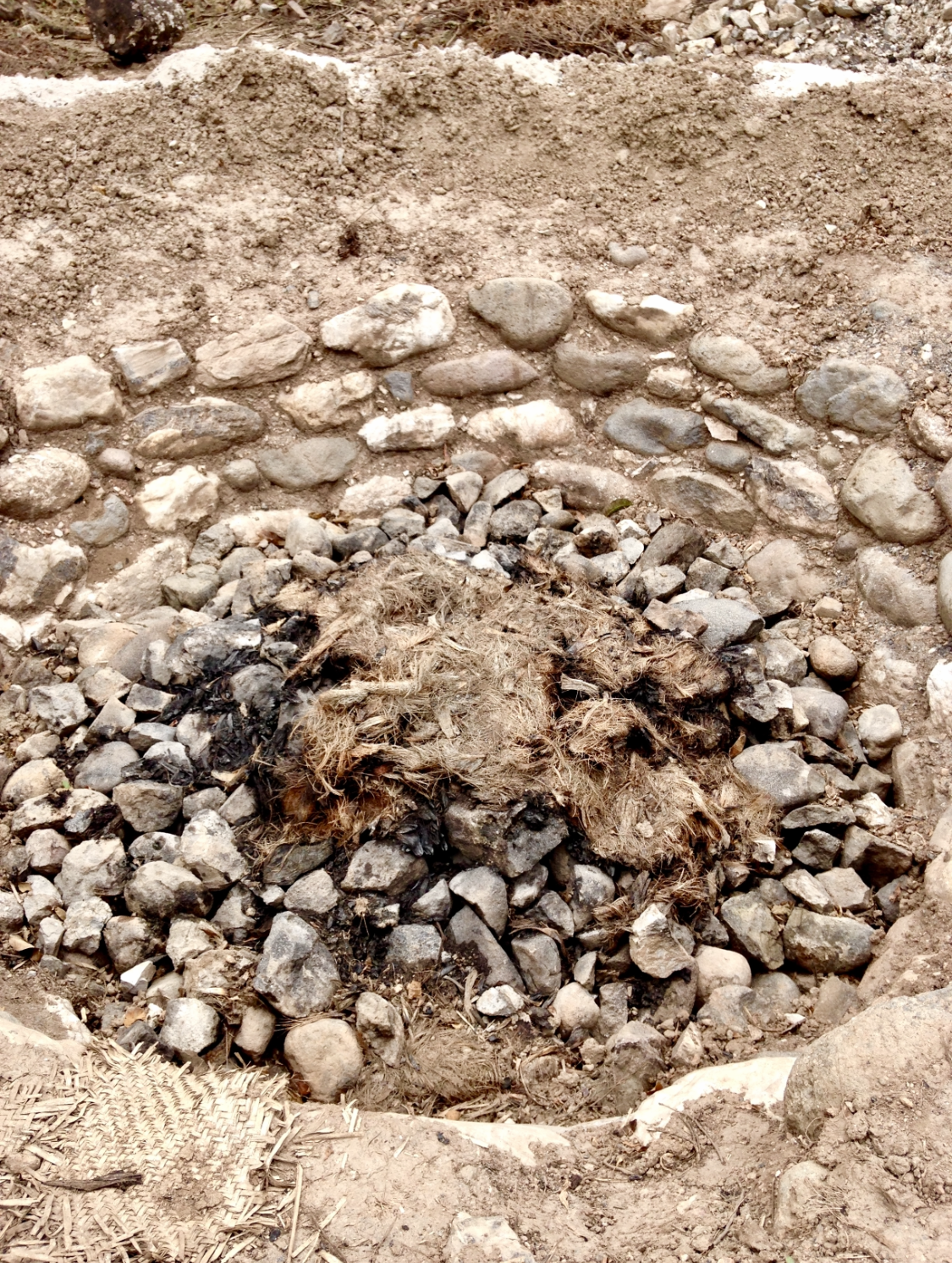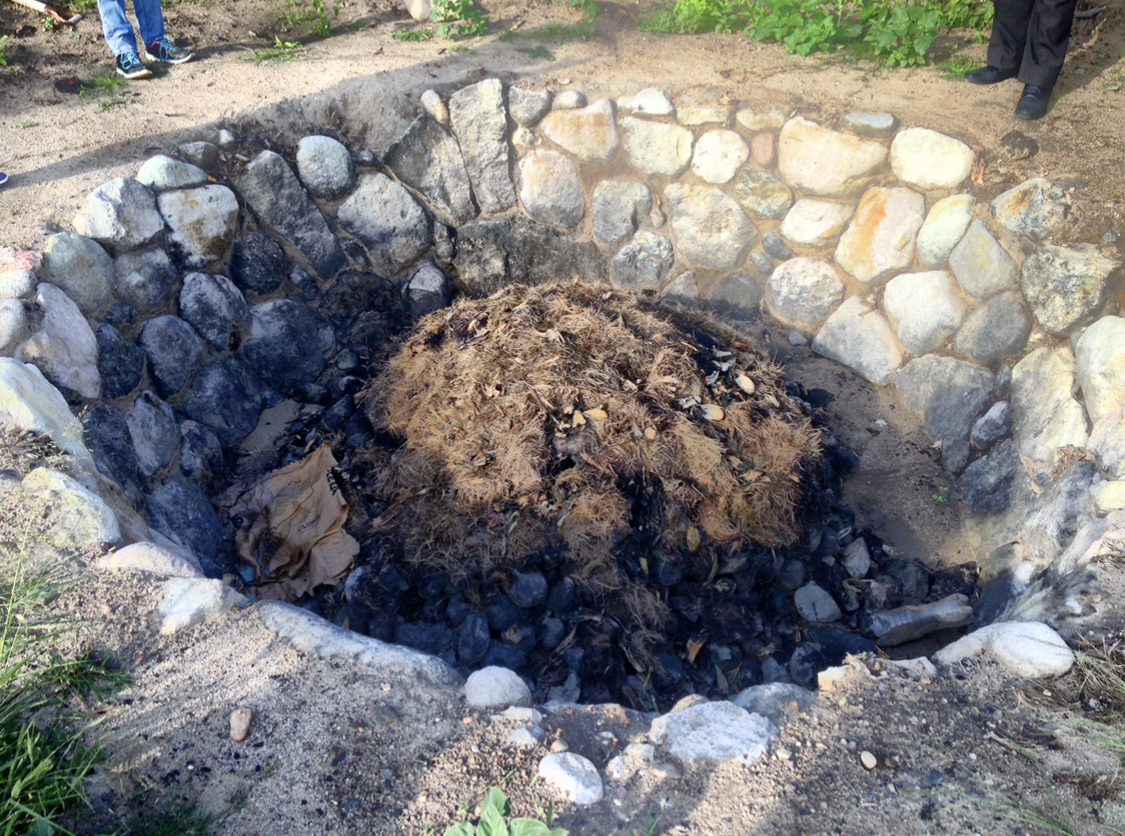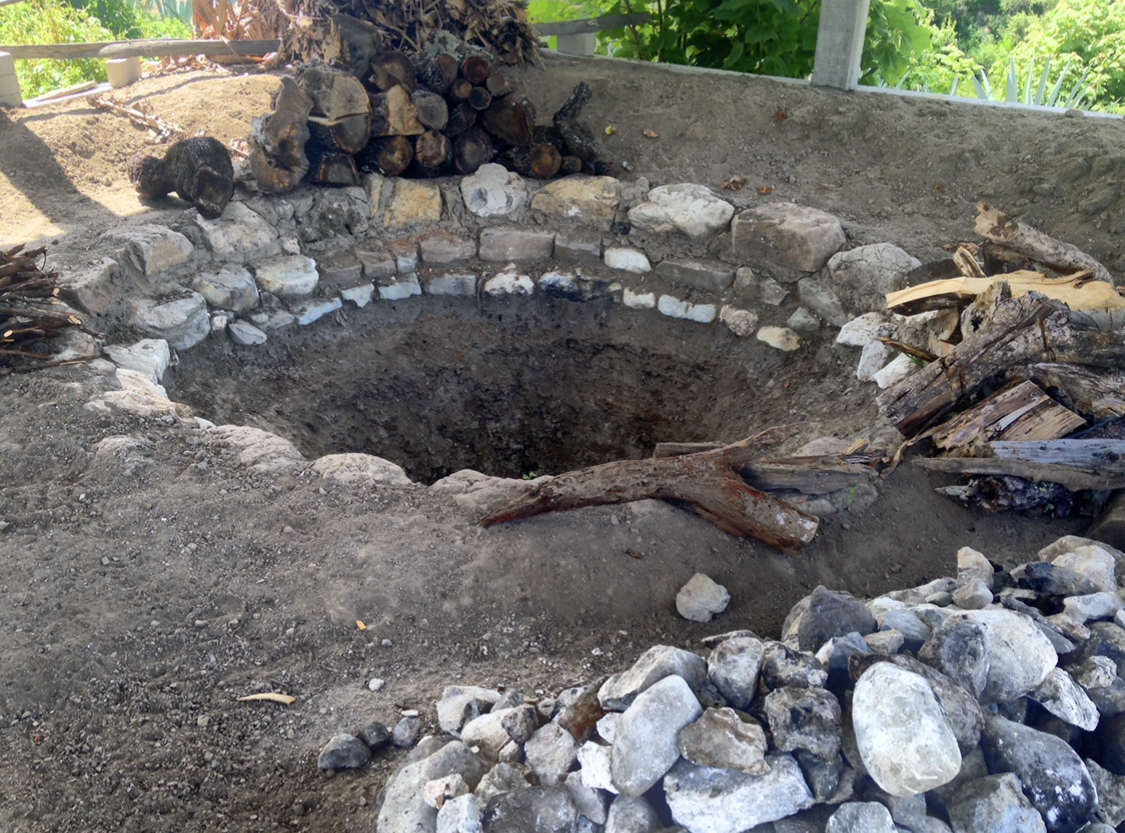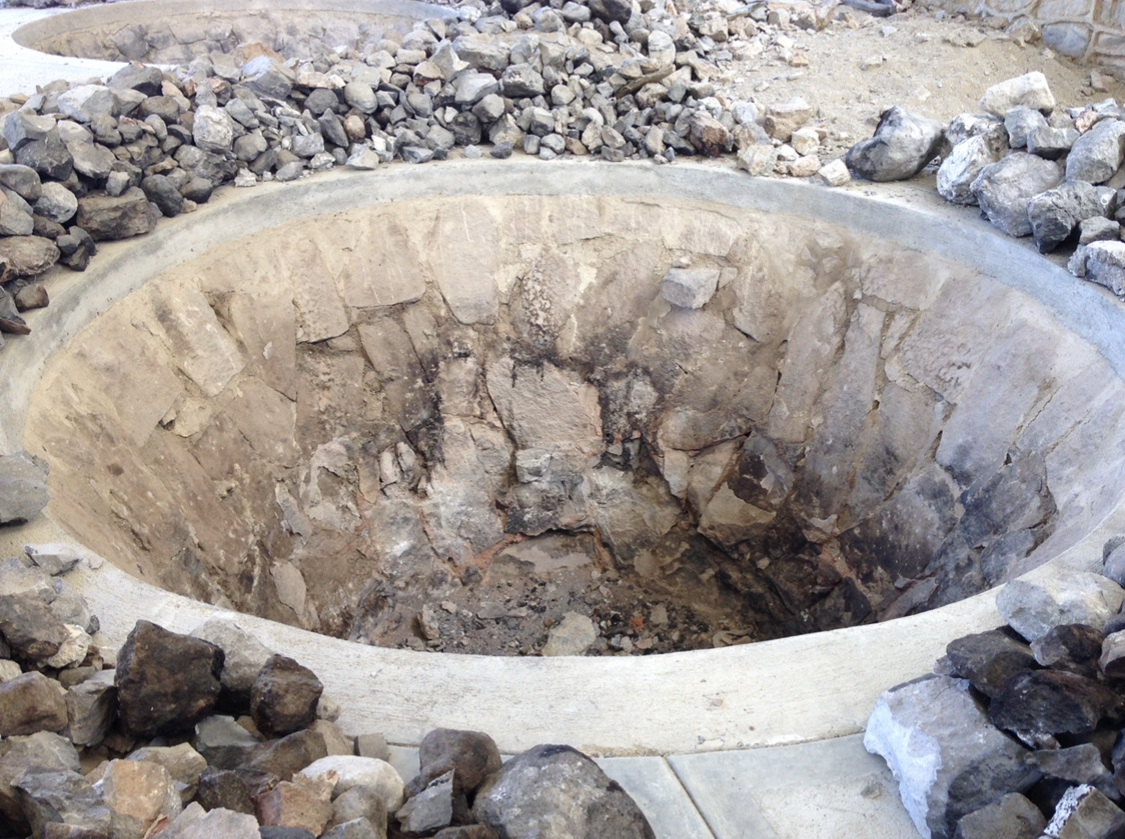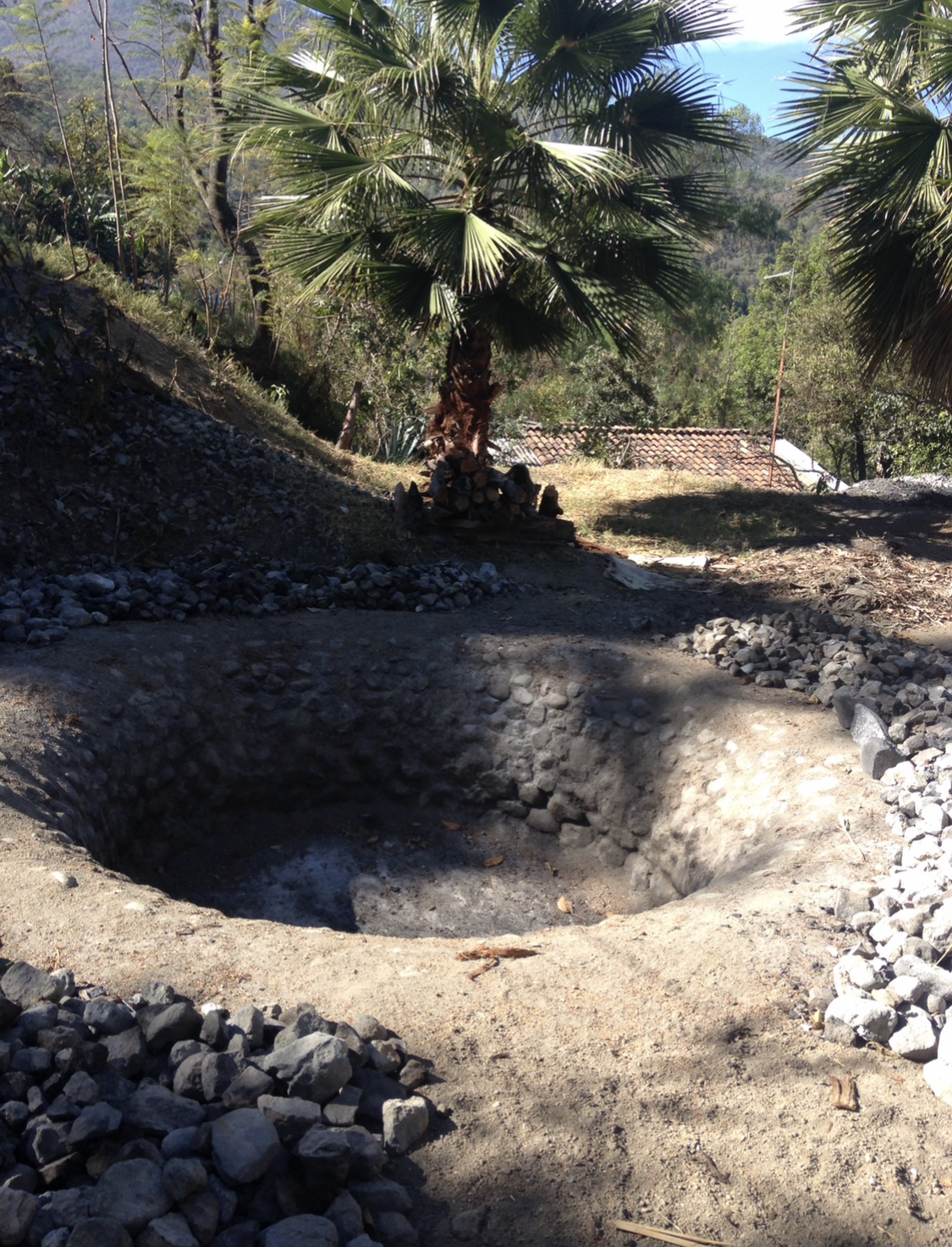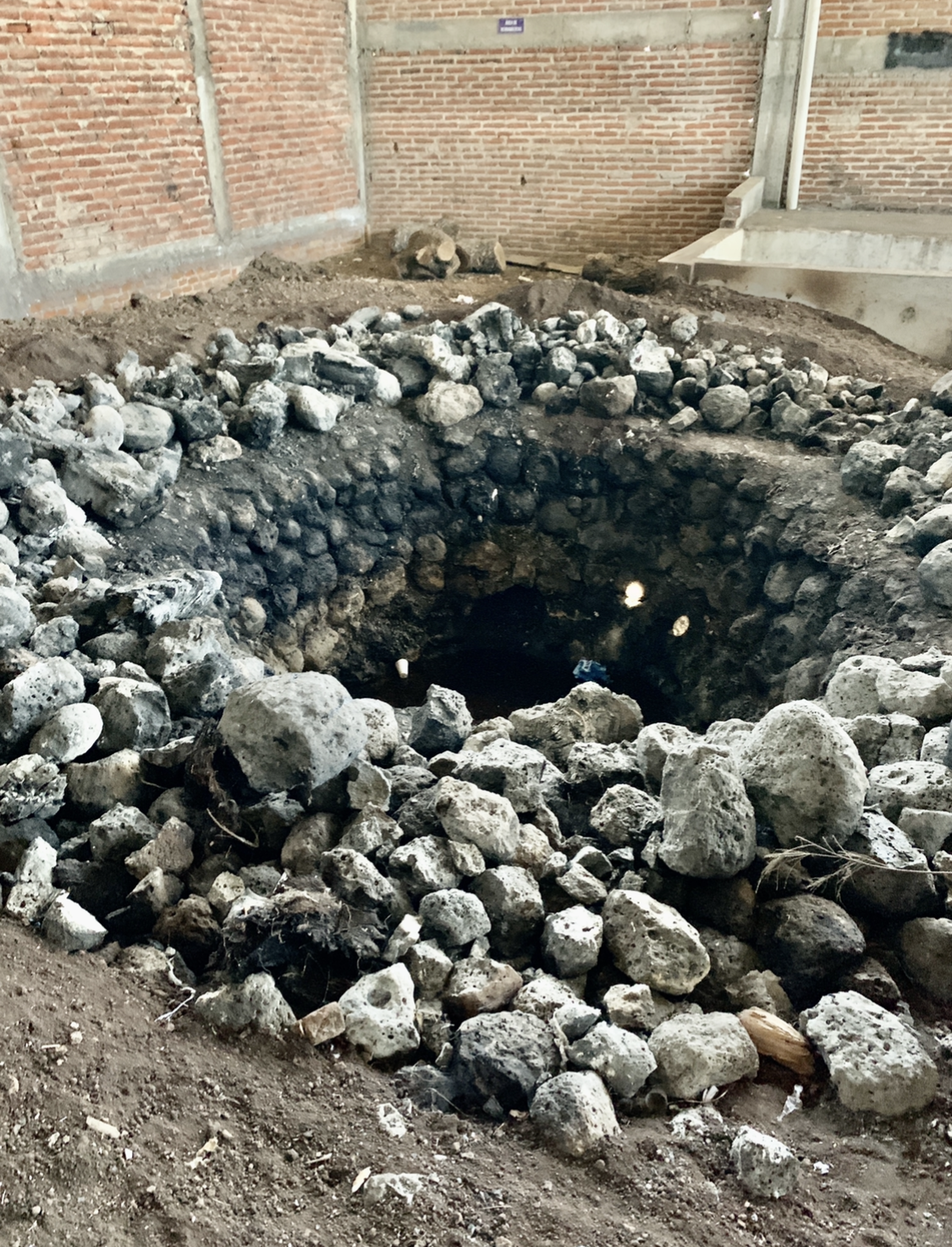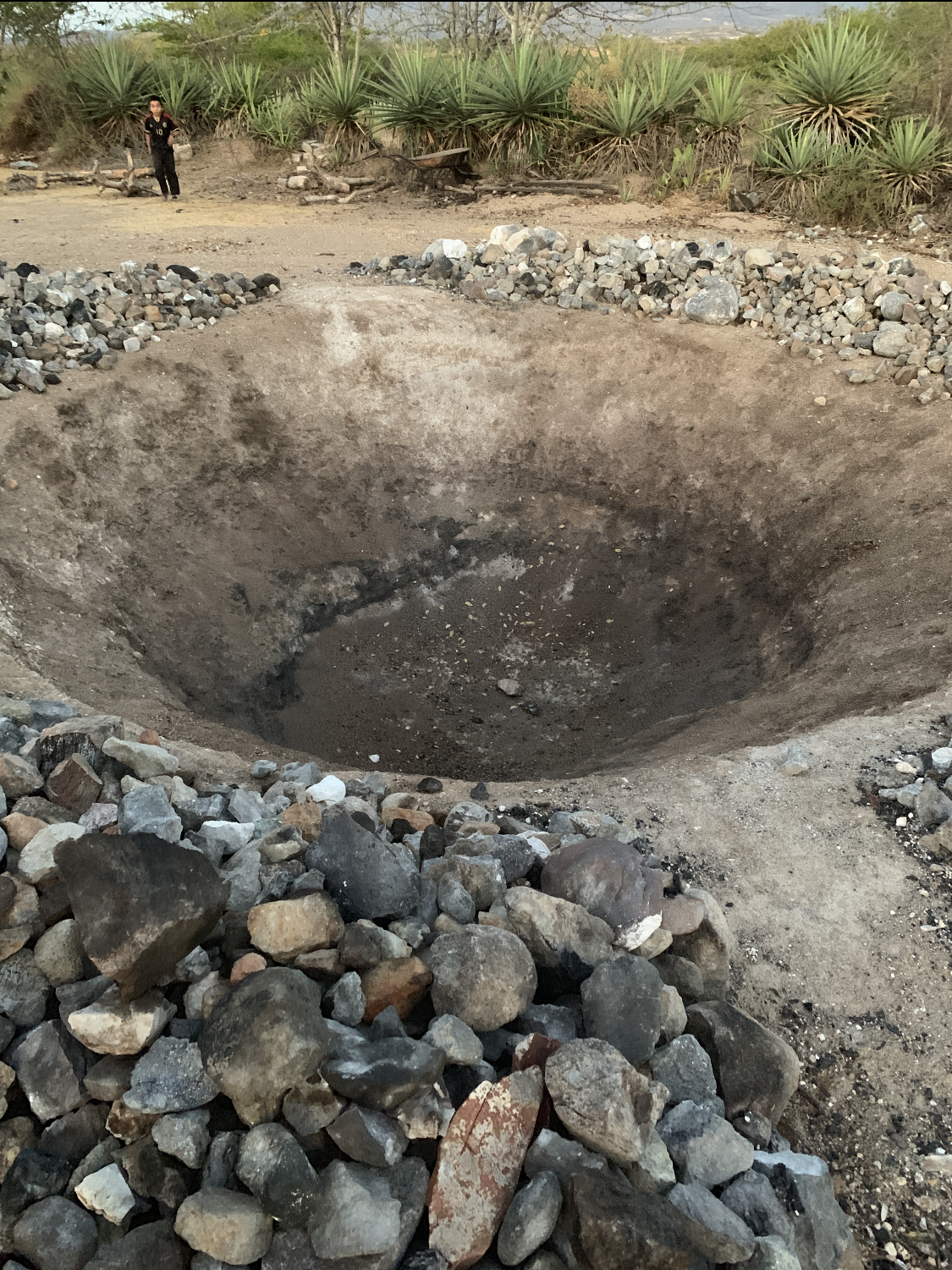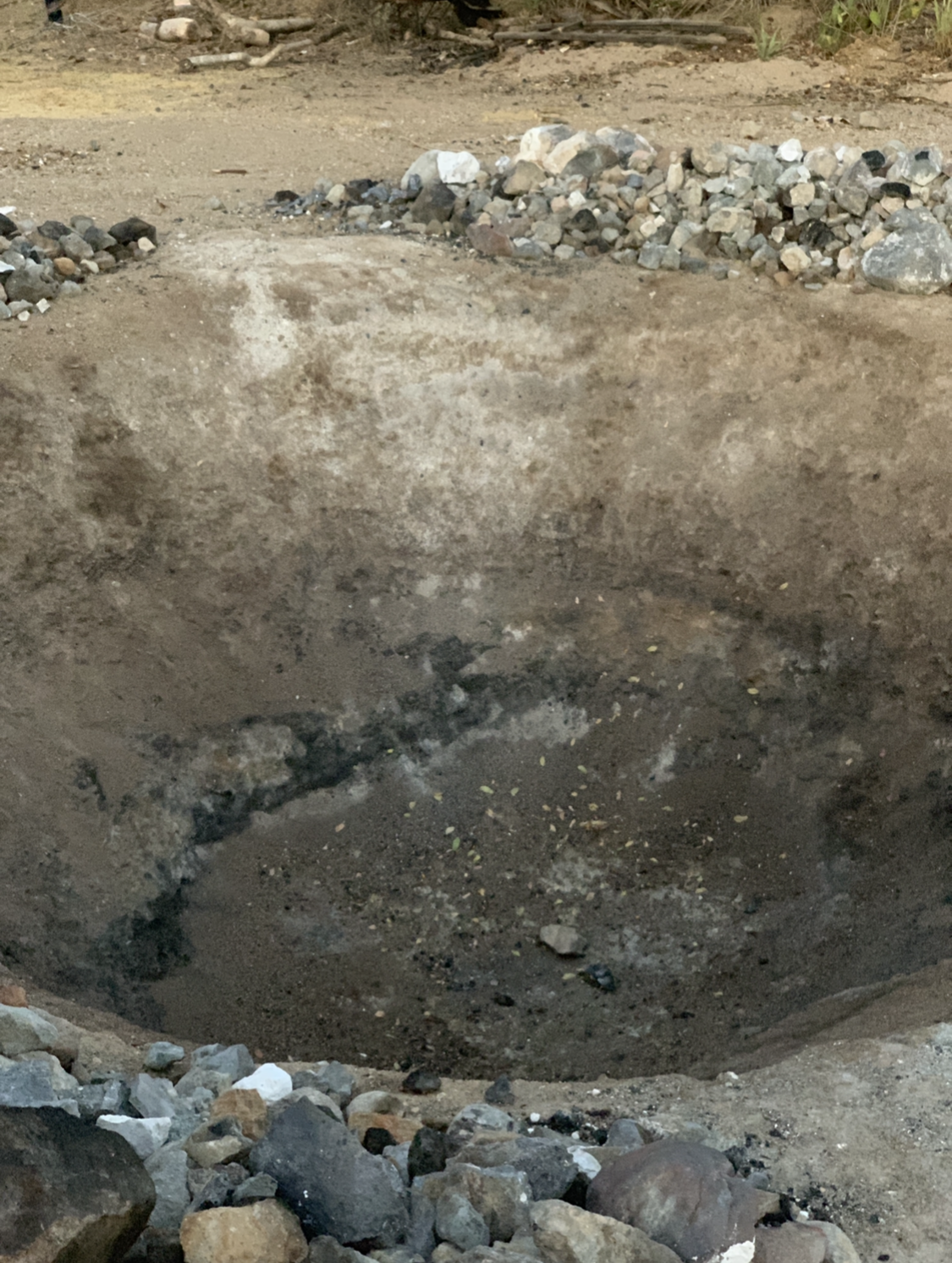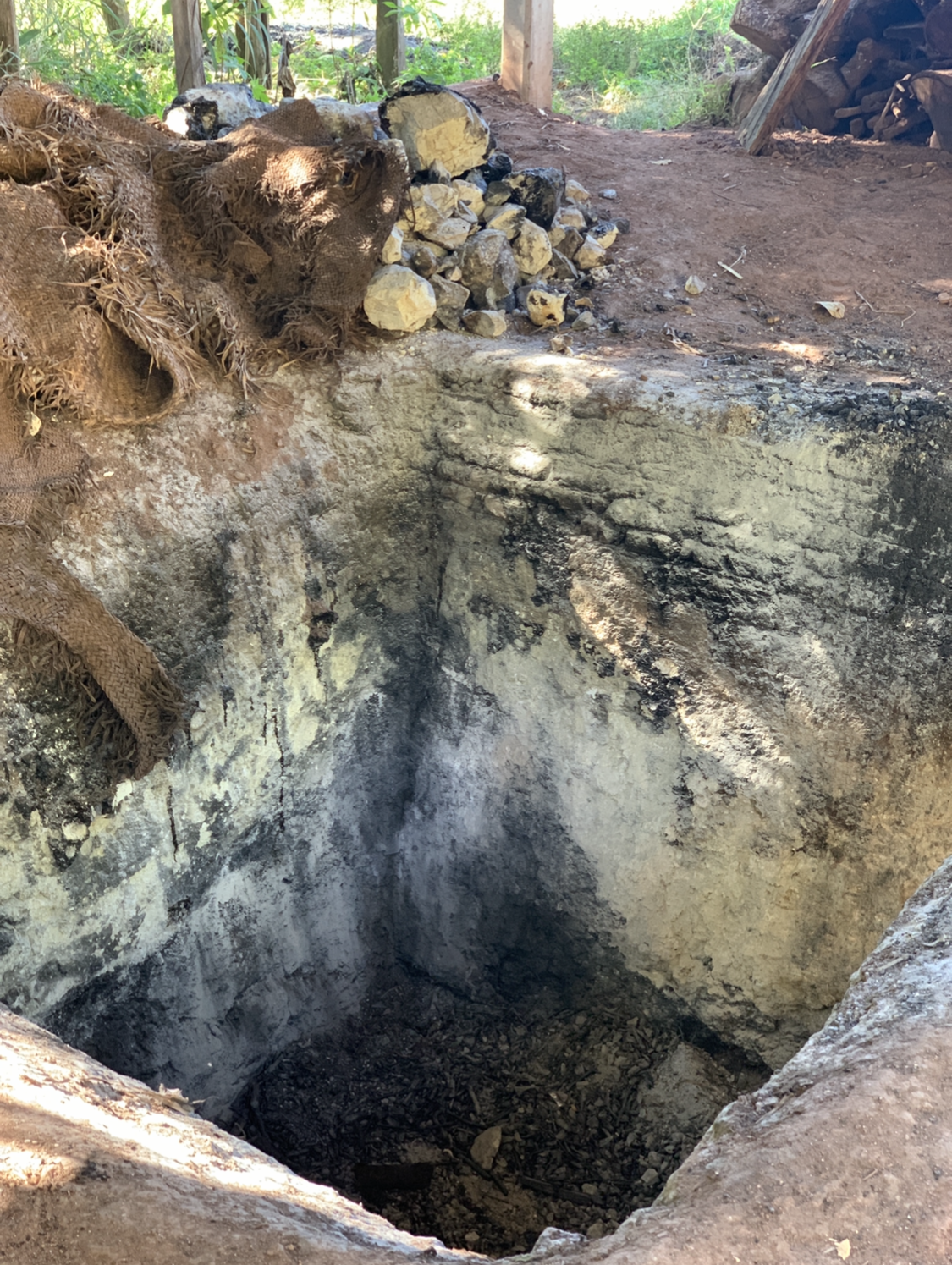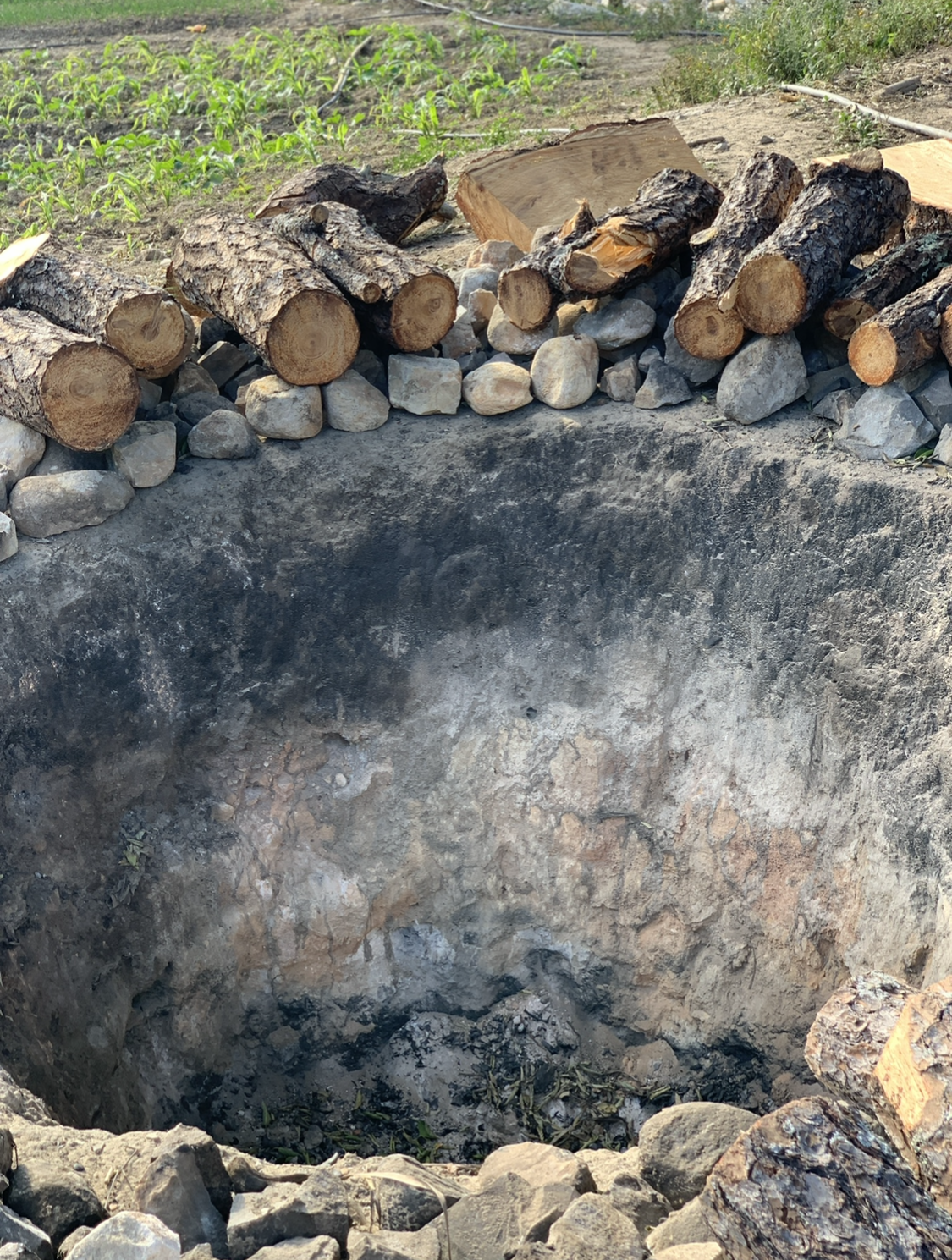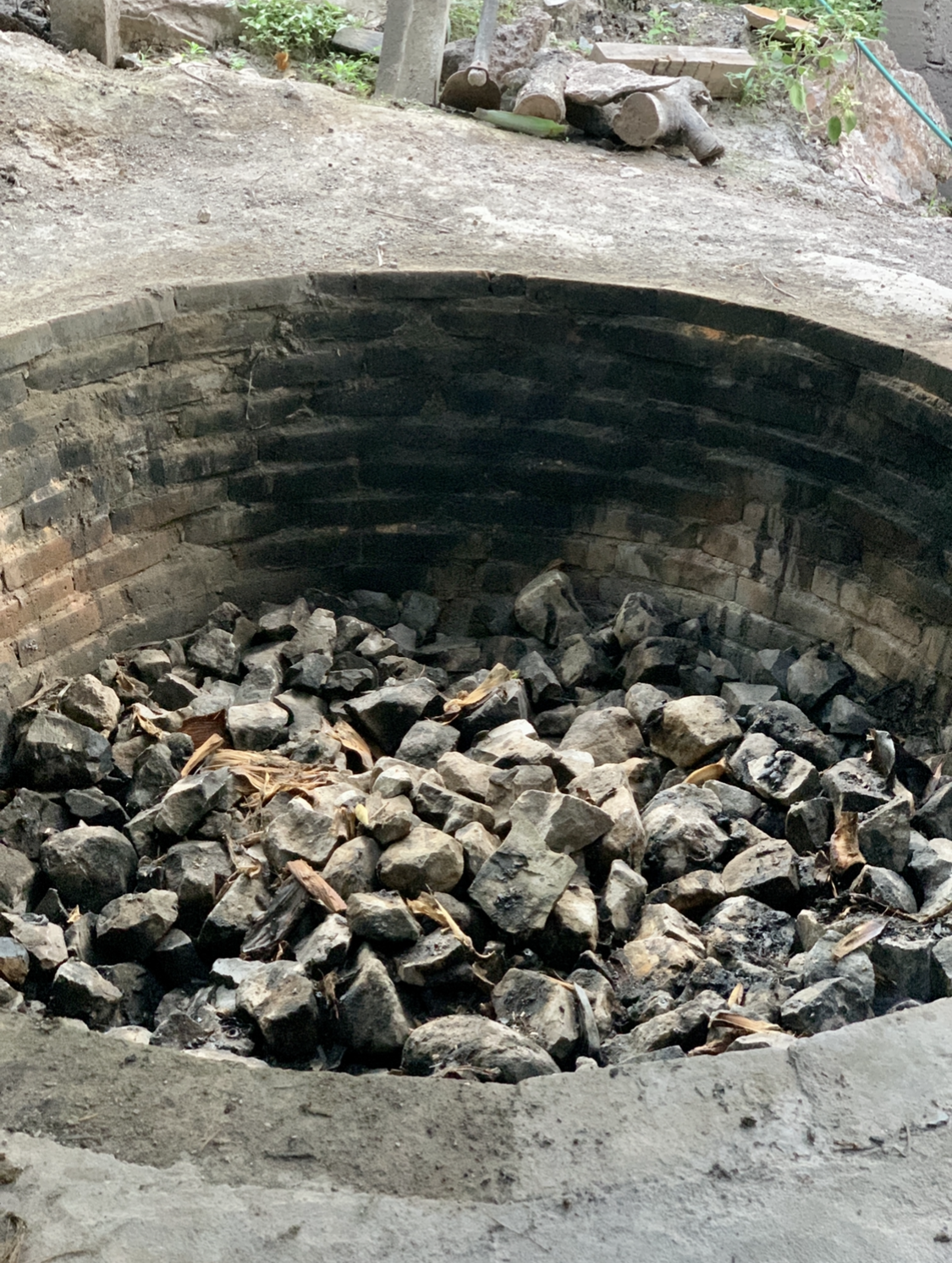River Rocks, Mountain Rocks, Volcanic Rocks: Mezcal Rocks
We talk a lot about the 400 decisions that palenqueros make in the process of producing heritage agave spirits. That’s the result of using pre-industrial methods in fermentation and distillation … but also in that first stage of production when you cook the agave to convert the fructans into fermentable sugars. Maybe it seems like, okay, you cook it underground in a stone-lined earthen oven. But what kind of stones you use in that oven can have a serious impact on how your mezcal tastes, Join us for a conversation about river rocks, mountain rocks, and volcanic rocks, and what they can mean to that spirit you’re drinking.
This episode of Agave Road Trip is brought to you by Ojo de Tigre Mezcal Artesenal. Ojo de Tigre is produced using artisanal practices and two types of agave – because two agaves are better than one. Easy on the land and easy on your wallet, Ojo de Tigre is mezcal for all. Learn more at ojodetigremezcal.com
Agave Road Trip is a podcast that helps gringo bartenders better understand agave, agave spirits, and rural Mexico. It’s hosted by Lou Bank and Chava Periban.
Episode Notes
Chava mentions that Sanzekan — a legendary brand of uncertified agave spirits out of Guerrero — no longer exists. That’s not 100% accurate. Sanzekan is a cooperative that “promotes the economic and social development of rural communities through the sustainable use and management of natural resources” in the central low-mountain region of Guerrero. They have a brand of uncertified agave spirits, but four of the legendary producers who used to participate in the cooperative — Dons Refugio, Ciro, Tomas and Antonio — have left to form Aguerrido. Those producers are also selling their agave spirits to Mal Bien for export to the USA.
I mention that I’ll include a drawing of a concept for catching and protecting the agave “nectar” in the horno — the earthen oven in which the agave is cooked — before it can burn up in the process. But then I never got around to it and now can’t recall what the theory was. That, kids, is the problem with working so far out in advance. So put off until tomorrow everything you were supposed to do today and maybe you won’t lose ideas like this.
However, as promised, below are more pictures of earthen ovens and the rocks and stones that are used as heat “batteries” in them. And a groovy time-lapse video of an horno being built at the palenque of Lalocura in Santa Catarina Minas, Oaxaca, Mexico.
Episode transcript
Lou: So no one ever told me I had to keep my distance from the ROTC guys marching in front of me, and they suddenly stop [SOUND OF TEXT MESSAGE ARRIVING] Oh, hang on, let me answer these.
Chava: Sure.
Lou: [SOUND OF TEXT BEING SENT] Okay, so these ROTC guys marching with their rifles start marching backwards, and begin hitting my hood, and stream— [SOUND OF 2 TEXT MESSAGEs ARRIVING] Wait, sorry.
Chava: You got some side hustle interfering with this side hustle, Lou? [SOUND OF TEXT BEING SENT]
Lou: No, it’s … well, friends are texting me all the time now when they’re at a bar, asking me which mezcal they should order.
Chava: Friends of yours? They don’t know what they want already?
Lou: Some do, but for some … ordering mezcal has gotten as complicated as ordering wine.
Chava: That sounds intimidating.
Lou: Right? And ordering great mezcal shouldn’t be intimidating.
Chava: You know that’s the tag line for Ojo de Tigre Mezcal Artesenal, right, Lou?
Lou: I know that Ojo de Tigre is the Mezcal for All.
Chava: That’s another tagline, Lou.
Lou: Maybe it is, Chava, but two agaves are better than one, and Ojo de Tigre is made with both espadin and tobala.
Chava: Has Ojo de Tigre taken over your soul, Lou?
Lou: No but Ojo de Tigre mezcal is taken from the soul and expressed with the hands.
Chava: Now I’m feeling a bit intimidated, Lou. How about we just have a copita full of Ojo de Tigre and pick this up in the morning?
Lou: Ojo de Tigre Mezcal Artesenal – it’s easy on the land, and easy on your wallet!
Chava: I’m going to unplug Lou now. If you want to learn more about Ojo de Tigre, visit ojodetigremezcal.com
Lou: [FADE OUT] Your mezcal should be as full of character as you are! Ojo de Tigre Mezcal Artesenal: Light on smoke, full on character!
Lou Bank [00:02:20] I am Lou Bank.
Chava Periban [00:02:21] I am Chava Periban
Lou Bank [00:02:23] And this is Agave Road Trip, the podcast that helps gringo bartenders better understand agave, agave spirits, and rural Mexico, and in particular helps them understand the process of cooking the agave in a stone lined earthen oven, which is not the way it is always cooked, but it is one of the ways that they cook the agave to prepare it for fermentation and distillation. Last episode we went deep on how the wood in that process -- in the stone-lined earthen oven -- how the wood affects the outcome of the flavors.
Chava Periban [00:02:59] Well, we didn't resolve some of the issues. We had that conversation, but we are not going to talk more about it — the wood thing, it's done. But —.
Lou Bank [00:03:09] If somebody wants to talk wood with us, like corner us at some mezcaleria some time in the future when we don't have this virus floating around us.
Chava Periban [00:03:19] Yeah, but only if you're slightly drunk because otherwise you won't stand us.
Lou Bank [00:03:25] OK, so we're not going to talk about wood. What are we going to talk about, young Chava?
Chava Periban [00:03:29] Well now what I want to talk about is ... OK, so the pitoven process is you throw the wood in, you burn it, you create coal, it gets ripping hot, you throw stones on top of it. And there's the second question: Which kind of stones are you throwing on top of the wood? Because the stones, I like to think of them as the grandparents of elements? You know, like electric elements? It's an efficient way of harvesting energy and then using that energy to cook the agave. But there's many types of stones—
Lou Bank [00:04:03] So in essence the stones are sort of like batteries for heat.
Chava Periban [00:04:04] Yeah, exactly. Elements fail.
Lou Bank [00:04:08] But you said something that I find interesting. You said that the fire in the wood goes down to coals and then you throw the stones in.
Chava Periban [00:04:16] Yeah.
Lou Bank [00:04:17] Now the process as I thought I was seeing it — as I *thought* I was seeing it, Chava — was throwing the stones in while the fire was going.
Chava Periban [00:04:28] Well, that's correct. I mean, that's actually a very difficult moment because you want the wood to have enough oxygen to keep burning and you don't want to just cover it up with stones and destroy the fire. So it's right at that moment where it has enough energy to keep on going.
Lou Bank [00:04:55] This goes back to that whole idea of the four hundred decisions. What is the proper moment? When is the proper moment at which you put those stones on top of those burning logs?
Chava Periban [00:05:07] Yeah.
Lou Bank [00:05:08] I'll say another thing that I've seen is sometimes the pit is just dirt. And I've seen a number of pits where they've literally lined the walls with stones. I've seen it lined with bricks and I love those. And those are going to carry the heat in a different way, right?
Chava Periban [00:05:25] Yes. I don't know how much that's going to affect the results, though. I think it's more so it's easier to clean and you have so much dirt on top of your agaves insulation-wise, and that will make a great difference. But the other thing that I think you're touching on is I've seen ovens that are conical and others that are cylindrical. And the shape is going to make a huge difference in how the heat is traveling and affecting all of it for sure. The cylindrical ones you've seen in Michoacan mostly, right?
Lou Bank [00:05:57] No, I've seen— I hate to say most versus not most, but I've absolutely seen cylindrical ovens in the Mixteca region of Oaxaca. I've got a great picture. I'll throw that onto the website. One of the most beautiful little hornos I'd ever seen. It was so frustrating because the the the mezcalero wasn't home, or anyway wasn't at the palenque. He probably was home when I saw it.
Chava Periban [00:06:24] So, for factors you have to take into consideration, you have the shape; you have, when do you throw the stones in — at what moment. Then the question arises, which kind of stones do you throw in? And I've seen people throwing river stones, volcanic stones. Have you seen the popcorn effect on the popcorn effect?
Lou Bank [00:06:46] No!
Chava Periban [00:06:46] Have you ever gone to a tepata where they're using brand new stones?
Lou Bank [00:06:51] No, or, I guess not?
Chava Periban [00:06:53] they start popping like popcorn and they start flying all over the place and you have to really take care of your head because you don't want to be hit by one.
Lou Bank [00:07:03] Oh, man, that's crazy.
Chava Periban [00:07:05] So there's actually three types of stones. People do not like to use the the river stones because they pop like crazy. So they like to go to get mountain stones, like del monte, if you don't have any volcanoes around you. But if you happen to be lucky enough to have volcanoes, you'll go find the volcanic rock.
Lou Bank [00:07:25] You mean, Lucky enough to have *inactive* volcanoes around you. But, hang on a second. What's the difference between a mountain stone and a river stone?
Chava Periban [00:07:33] I'm not sure about the science behind it. I think the river stones tend to have more crystals in them. They say they're harder, so they crack easier. I'm not a geological expert, but they just know that they're going to crack like crazy and the mountain ones won't.
Lou Bank [00:07:52] Interesting. You know, something else as we're talking about this process that I found fascinating is, well, I'm saying a few weeks ago, probably a week ago. But by the time this runs, it'll be months ago. I had an exchange on Instagram with German, who we quoted in our previous episode about which kinds of wood you use when you're cooking in the horno. I had an exchange with him and we were talking about a couple of things. First of which was—
Chava Periban [00:08:23] Oh, no, this was about putting the agave fibers on top of those hot stones before you put the agave in the oven, and how that creates smoke.
Lou Bank [00:08:32] Right. And that's like a secondary type of smoke that also flavors the agave. And I will contend that it's way more significant than the wood smoke.
Chava Periban [00:08:44] Oh, that's interesting.
Lou Bank [00:08:45] And I would imagine that much as the different woods impart different flavors that different kinds of agave fibers, the fibers from different kinds of agave, will also impart different smoky flavors.
Chava Periban [00:08:58] I'm not sure about that one, actually. Like, that's extremely interesting because if that's true, you will be saying that if you go on with my idea of creating peated mezcal, you can use different agave fibers to create different types of smoky flavors.
Lou Bank [00:09:16] We should get Lalo to do this for us, to do like different batches using the same agave, like everything exactly the same, just different fibers protecting the agave from the hot stones in the oven.
Chava Periban [00:09:24] That'd be incredibly awesome.
Lou Bank [00:09:26] And then, of course, Lalo would make me buy 300 liters to pull this all off.
Chava Periban [00:09:31] But, you know, I have a big family. So if I have all my cousins just buy a liter, we can go down to like seventy-five liters. That list can be consumed by my family happily.
Lou Bank [00:09:43] But the point that you brought up that I found so fascinating in the Instagram exchange was that there are places that don't use those fibers as the shield between the agave and the stone. Where was it?
Chava Periban [00:09:58] Well, I thought it was Durango and that's why we started talking with German. But he told us that in Durango they use the fibers. But he also mentioned something else that's super interesting. He said sometimes they just use plain grass, because the grass is already wet. They use the fiber to protect the pinas, but the fiber has to be wet, otherwise they'll just burn and won't protect anything. So some people, I will think that they use grass when it's the first tepata of the season and they don't have any agave fibers because they don't have fibers left.
Lou Bank [00:10:31] Oh, I love that theory. That makes so much sense. But OK, so there's one other way of creating a barrier. But there was another one that you brought up in Guerrero.
Chava Periban [00:10:41] Yes.
Lou Bank [00:10:42] And that is?
Chava Periban [00:10:44] Just cold stones. And what Angel — who is the guy that I buy my Sanzekan agave spirits from — told me is because in Guerrero they don't like the smoked flavor.
Lou Bank [00:10:54] We'll put a link on the website to explain what Sanzekan is, but keep going. If they don't like the smoky flavor, instead of a fiber barrier, they throw these cold stones on so there's no smoke.
Future Chava [00:11:03] This is Future Chava. The Sanzekan agave spirits project doesn't exist anymore. You can still find all the spirits made by these great maestros under the brand name Aguerrido when you happen to travel to Mexico, but if you are in the USA, you can find it imported by Mal Bien.
Chava Periban [00:11:23] There's no smoke, and that's why I think and you know, like, again, another story—.
Lou Bank [00:11:28] This is what you think why your mom likes that agave spirit best?
Chava Periban [00:11:32] Well, yes, I've been trying to get my mother to drink mezcal for years now and my mother doesn't drink at all. I remember once she came to the house and she's like, finally I found an alcohol that I liked. I was like, what's that alcohol mother? She's like, well it's like wine has like some sparkling, it's called like, "mowmi." I was like Moet? She's like, yeah yeah yeah. That's what I like, yeah. Like, Oh big surprise, Mother, I expected this from you. But I've been giving her mezcal all my life. Well not all my life but my recent life. And she hates everything. And finally I buy a zacatoro, which is a beautiful small agave from Guerrero. Bring it to my house. It was meant to be for myself. She tasted it and wouldn't let me take it. After that, she was like, The first mezcal I like in my life. Why have you been feeding me stupid things? Thanks, son.
Lou Bank [00:12:25] And that that that mezcal actually is not certified. So it's just an agave spirit that was made by Ciro, is that right?
Chava Periban [00:12:33] Ciro. Yeah. Yeah. Ciro Barranca, yeah.
Lou Bank [00:12:35] Yeah, yeah. Cool. So OK, so there's that piece to it. But then there's also ... Ok, I am guessing this is not ... there's nothing that is universal, but a number of the mezcaleros that you and I know after they've built this, this oven. Right. So you've got some kind of heat generated by some kind of wood. You've got generally some kind of barrier thrown on top of the rocks that are being heated by the wood. And then you throw in the agave and you build up this massive agave hill that extends well outside of the earth itself. You cover it generally with something. Maybe it's leaves, maybe it's burlap, maybe it's plastic, and then you cover that with more dirt.
Chava Periban [00:13:23] But here I want to talk about something else that I think creates a huge effect, which is, how did you arrange the agave? So you have to think of this as architecture, right? Like everybody has a different geometric approach about how to put agaves on top of agaves and fit the most in there. But it's also because you want to expose the most part of the agaves to the most amount of heat so they cook properly. Whatever you think that means, right? Some like it medium-rare, some just like it well-cooked.
Lou Bank [00:13:57] Yeah. But you know, it reminds me of that trip we took to Durango when we were at the the vinata of Origen Raiz and hey had all of us gringos — and you, the chilango — go throw the agave into their horno. And I thought, oh this is not going to work well. And I finally realized they were jumping in and rearranging after we were screwing everything up.
Chava Periban [00:14:24] Yeah. If you want to offend the mezcalero, tell them that you want to help during the tapata and just throw everything in the wrong place. They're going to be so angry.
Lou Bank [00:14:35] So, OK, so it's going to affect the outcome based on how much space you leave between each of the agaves for the circulation of heat, but also sometimes for the circulation of steam.
Chava Periban [00:14:51] Yes. And that's, I guess, what you want to get to. some people add water after they covered the horno. Some people do not add water, right?
Lou Bank [00:15:00] Yeah, not a ton of water, like a five-gallon bucket full of water into a hole at the top of this ... I don't know, how many tons would an average tepata be?
Chava Periban [00:15:07] There's no such thing as an average pit, but I'll say like six tons to twelve tons.
Lou Bank [00:15:14] Yeah. So not a ton of water, but it is going to create steam. And then they cover up that hole. And so one of the things that German had suggested in that Instagram exchange was that it was turning the horno into a pressure cooker, which I just ... I don't buy it. And I don't want to sound like I'm disrespecting German because I have never-ending respect for German and his family. And but I just don't believe it. Like, if it's creating a pressure cooker, wouldn't that just suck in the sides? Or blow out the sides?
Chava Periban [00:15:49] Well, it's probably definitely creating a little bit of pressure because you have all these agave on top, each one—
Lou Bank [00:15:55] Is it probably or definitely?
Chava Periban [00:15:57] It's probably, it's probably-maybe, Bjork style, but—
Lou Bank [00:16:05] Well, it has to be creating some pressure, without question. Otherwise, you wouldn't have little spots every once in a while blowing the dirt off to get out. That's what steam does. Yes, but.
Chava Periban [00:16:16] But.
Lou Bank [00:16:17] But.
Chava Periban [00:16:17] But.
Lou Bank [00:16:18] A pressure cooker?
Chava Periban [00:16:19] No, no. That's why people in tequila created the autoclave, which is a whole other discussion we'll probably one day—
Lou Bank [00:16:27] I don't think it is. I don't think it is. I think we have to explain an autoclave to explain what you're talking about here. And it's simply it's a giant pressure cooker. Yeah, but they use— that anyone can use, I should say, because there are absolutely people making mezcal who use an autoclave to cook their agave. So if you cook your agave in an autoclave, you're using steam pressure in this giant metal cylinder to rapidly cook the agave.
Chava Periban [00:16:56] Yeah, when we say rapidly, it's anywhere between like 12 hours to 16 hours. It depends. But instead of spending three to five days, you spend—.
Lou Bank [00:17:06] Or seven days days.
Chava Periban [00:17:07] Or seven or 30 days, some crazy ones, but.
Lou Bank [00:17:10] Well, but that's not cooking. But but but yeah, I think it's a fair point. Three to seven days to cook the agave in a stone-lined earthen oven versus 12 hours in this autoclave.
Chava Periban [00:17:20] Yeah.
Lou Bank [00:17:21] And why is it faster?
Chava Periban [00:17:22] Because of the pressure. Because you can create so much hotter environment inside the autoclave, basically, and you're creating the pressure and pushing all that steam inside the agaves.
Lou Bank [00:17:35] And that's the point that I find interesting. So you're pushing the steam into the agaves, cooking it more rapidly, whereas the steam that is created within the traditional, more traditional horno, that underground oven. It's not really pushing into the agave.
Chava Periban [00:17:50] No, I mean, it's the same as the Dutch oven. The difference between the Dutch oven and a pressure cooker, I think it's like basically that. I mean, I'm sure it gets more specific than that. But I feel like, you know, one of those—.
Lou Bank [00:18:01] There's a whole use for that term Dutch oven that goes back to being in bed. But I'll explain that to you after the show.
Chava Periban [00:18:10] Yeah, OK, so that's that. And I think we really need to wrap this up, because we've eaten up way more than our share of these episodes. But the last thing that I want to say is that in when you use the pit oven, you're wasting all the honey, the sugar that's coming out of the agave, it's just burning, in essence.
Lou Bank [00:18:32] The agave nectar, you're talking.
[00:18:33] Yes, but I will contend that that nectar, when it burns, it creates fumes that actually impart some flavor to the agave. So in the tequila world, this is understood to be the stupidest thing that mezcaleros do. You are wasting so much precious sugars that could become ethanol because of your dumb way of cooking the agave. But I really think that there's something in there that creates this magic that we all talk about, but we don't really know how it happens.
Lou Bank [00:19:04] God, you know, the fact that you refer to them saying *precious* sugars, like, I'm thinking maybe those sugars aren't so precious, I think that they have to go away.
Chava Periban [00:19:14] I think they're precious. I really think they are.
Lou Bank [00:19:17] Oh, you think they're precious and OK, so then you think that the tequilas that are made in the autoclave taste better than the agave spirits that are cooked in an underground oven?
Chava Periban [00:19:29] I think they make way many other decisions that work against their tequila on the other parts of the process. But if I could find a way to use the the traditional way of cooking the agave and collect at least a part of those sugars, I'll be so happy.
Lou Bank [00:19:45] You know, I've got an idea how we could do that. So we should wrap this up. So for the second time, we should wrap this episode and then you and I will talk about how to draw it and we'll put that drawing — I have a theory about this — put that drawing on the website for any of these mezcal companies who are doing things in a traditional way but with advanced technology could then adapt them.
Chava Periban [00:20:10] You know, that's my thing. Lovely.
Lou Bank [00:20:12] Catch you next episode, Chava!
Chava Periban [00:20:14] Adios, Lou.
